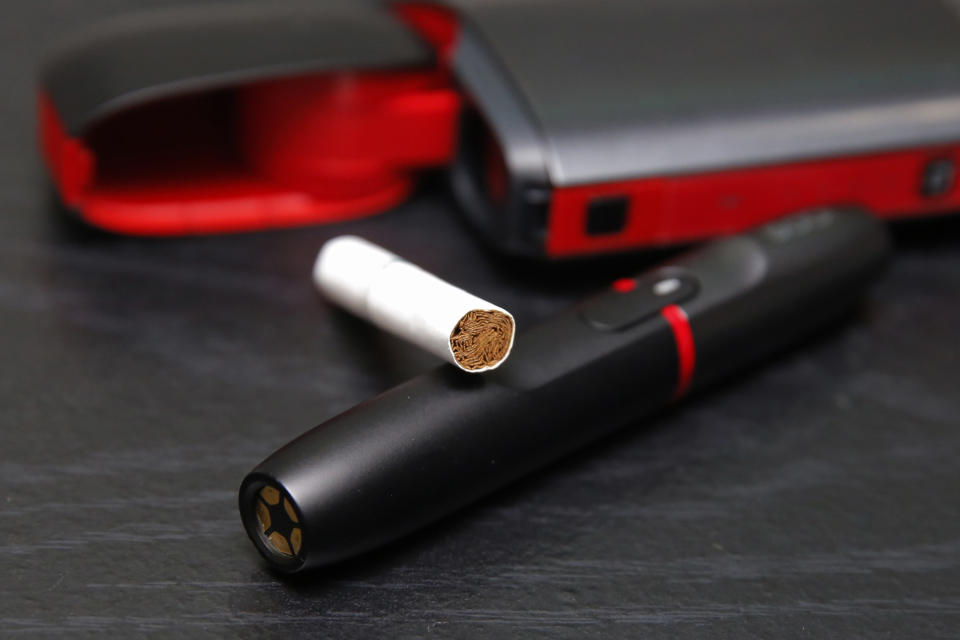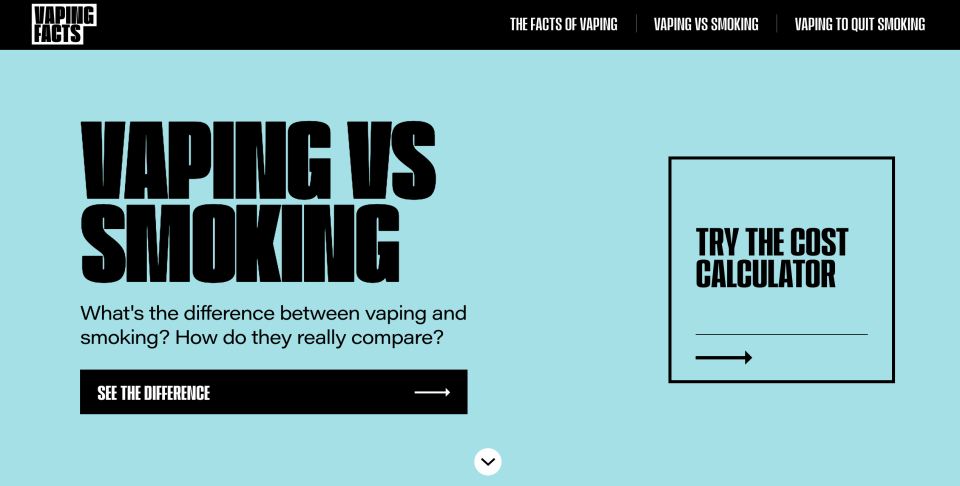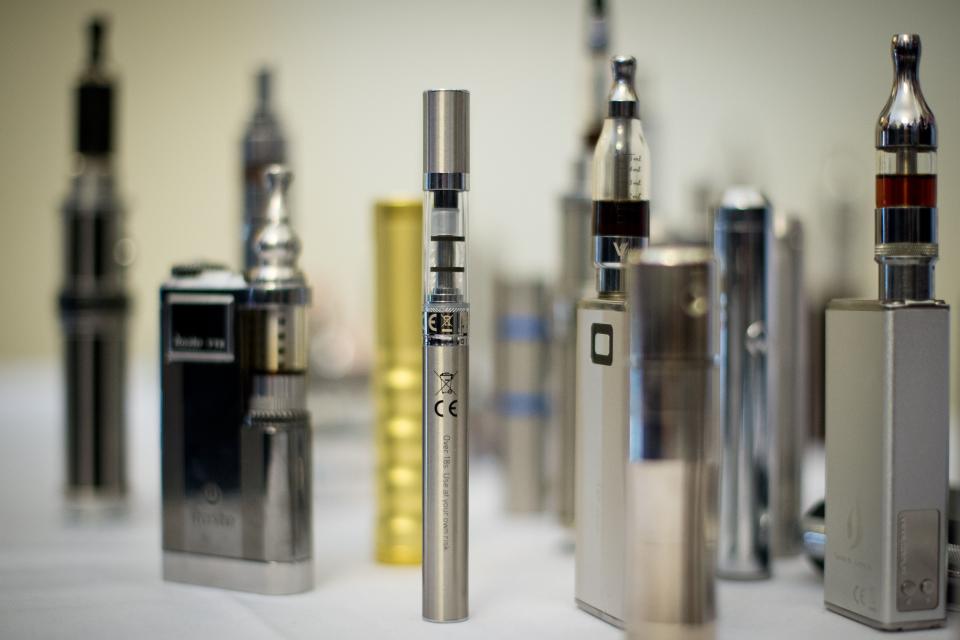E-cigarettes and alternatives: Experts call for regulators to adopt less rigid stance, look at scientific data

SEOUL — Experts from various fields have urged policymakers in Asia to cultivate a regulatory environment that facilitates purportedly less harmful tobacco alternatives by focusing on the science and technology behind such products.
Around 150 leading professionals from 18 countries – including those from the science, technology, health and policy-making sectors – took part in the third Asian Harm Reduction Forum held in Seoul, South Korea, on 29 August.
In his speech to kickstart the event, South Korean congressman Sang Jin Shin, a member of the health and welfare committee in the country’s national assembly, noted that harm-reduction policies – particularly in the area of tobacco alternatives – often take an “all or nothing” direction in Asia.
Countries and cities in the region, such as Singapore, Hong Kong, and Thailand, remain conservative in their attitudes towards such policies, while New Zealand, the UK and other European countries have taken a more liberal approach.
The forum’s keynote speaker Dr Konstantinos Farsalinos said, “Due to the difficulty in quitting smoking, tobacco harm reduction represents a historical opportunity to eliminate smoking globally through technological innovation – but resistance and obstacles to this cost millions of lives every year.”

Newer alternative tobacco products, such as e-cigarettes and "heat-not-burn" tobacco products, have garnered polarising opinions from different camps.
An e-cigarette, which is a type of vaporiser, works by heating a flavoured liquid mixed with nicotine to generate a vapour.
Supporters of these devices often cite a 2015 UK government-backed Public Health England study that found e-cigarettes to be around 95 per cent less harmful than their combustible counterparts.
In contrast, the US’ Centres for Disease Control and Prevention, a national public health institute, has warned that e-cigarette aerosol is not just “harmless water vapour” as it contains cancer-causing chemicals such as formaldehyde and heavy metals such as lead.
More recently, an outbreak of severe lung diseases linked to e-cigarettes and other vaping devices killed eight and sickened hundreds in the US over the past weeks. Most of the patients had reportedly vaped products purchased on the streets containing tetrahydrocannabinol, or THC, the principal psychoactive compound found in cannabis.
As their name suggests, "heat-not-burn" products heat tobacco leaves up to 350°C to produce a vapour. Traditional cigarettes involve the burning of tobacco at temperatures of around 900°C.
The vapour produced by “heat-not-burn” products has been touted to contain on average 90 per cent fewer toxic chemicals than cigarette smoke, according to tobacco manufacturing company Philip Morris International, which sells tobacco-heating products under its IQOS line.
However, the World Health Organization has said there is “no evidence to demonstrate” that they are less harmful than their traditional counterparts.

Harm reduction a ‘human right’
Harm reduction broadly refers to a range of policies, programmes and practices that aim to reduce the harms associated with a dangerous act or behaviour. The term is historically linked to interventions for intravenous drug abusers and has also been applied to alcohol use.
“Harm reduction is based on the principle that ceasing any risky behaviour is ideal, but is a pragmatic approach in understanding that this may be unfeasible in many cases,” said Dr Farsalinos, a cardiologist and researcher at the Onassis Cardiac Surgery Centre in Greece.
Calling it a “human right” and likening the use of seat belts or condoms to harm reduction approaches in daily life, he stressed that similar approaches to tobacco are “absolute” necessities, given that eight million premature deaths occur annually due to smoking.
Six out of the 10 countries with the highest number of deaths from smoking are in Asia, according to the study on the global burden of disease.
Dr Farsalinos noted that efficacy of approved methods, like nicotine replacement therapy, is low at under seven per cent.
He added, “How is it possible for any government in the world to allow the legal sales of the most deadly nicotine-containing product, which is the (combustible) cigarette, and at the same time, create regulatory restrictions or bans on a substantially less harmful alternative?”

‘Misinformed, misguided’ policymakers
The forum’s second key speaker, Lee Kuan Yew School of Public Policy professor Tikki Pangestu, noted that key obstacles to harm reduction in Asia include “misinformed and misguided” policymakers. The situation is made worse by the lack of quality local research, he added.
Critics of alternative tobacco products often argue that they have a “gateway effect” that may lead users to eventually transition to smoking combustible cigarettes, or use both.
This is of particular concern when it comes to youths using alternative tobacco products; such as in Hong Kong, where a 2018 study showed that there had been a 55 per cent rise in the proportion of Primary 2 and Primary 4 pupils trying the products.
Likewise, the Trump administration last week announced plans to remove all flavoured e-cigarettes from store shelves due to their increasing use among teens. According to data released last month, the usage of e-cigarettes among US high school students has more than doubled over the past two years.
Despite these numbers, many experts at the forum suggested that the figures alone are insufficient to prove that e-cigarettes will lead youths to smoke regular cigarettes.
“(The ‘gateway effect’ argument) is a position which is ideological, inflexible and totally ignorant of the evidence. And therefore, makes constructive dialogue almost impossible,” said Prof Tikki. “We need to continue to have faith in science to influence change…(and) local research debunking (it).”

Dr Hiroya Kumamaru, vice-director at Japan’s AOI Universal Hospital, cited a 2017-2018 government-supported survey that polled 64,000 middle and high school students on different types of habits, including smoking.
The survey results showed there was hardly any link between their usage of combustible cigarettes, "heat-not-burn" products and e-cigarettes.
He also noted that since the 2014 launch of "heat-not-burn" products in Japan, the prevalence of smoking has fallen significantly. “It went down 21 per cent last year, bigger than the year before,” Dr Kumamaru added.
Similarly, Dr Grzegorz Krol, director of UK-based harm-reduction group Knowledge. Action.Change, noted that users of snus – a type of smokeless tobacco product – had overtaken smokers (12 per cent versus 11 per cent) in Norway in 2017. In 2008, it was 6 per cent versus 21 per cent, respectively.
Apart from Norway, snus is also a popular alternative tobacco product in Sweden and has helped to dramatically reduced smoking prevalence in the country, added Dr Krol. The moist powdered tobacco is ingested by placing under one’s top lip and typically considered less harmful than e-cigarettes or "heat-not-burn" products.
Statistics by the Norwegian Directorate of Health also showed that women under the age of 25 who are snus users (14 per cent) far exceeded those who smoke (1 per cent) in 2017.
Regulatory ‘sweet spot’
Experts stressed that a balance must be struck between helping smokers who want to quit or switch to healthier alternatives and ensuring that such products do not get into the hands of youths.
However, it is the role of policy and law to set the right regulatory framework, said third keynote speaker and University of Ottawa adjunct law professor David Sweanor.
“You might need to change the taxes, advertising restrictions or place of sale. We have the tools to shape a market, like we've done on so many other things,” said Prof Sweanor.
Dr Ng Yee Guan, a senior occupational safety and health lecturer at the University Putra Malaysia, echoed the sentiment, noting that a special task force had been set up under the Malaysian Ministry of Health in June to formulate ways to control the use of e-cigarettes.
A blanket ban, as opposed to introducing “tighter but logical” regulations, may have the opposite intended effect, such as the illegal use and importation of such devices, he stressed.

Such regulations are firmly in place in countries like the US. For example, e-cigarette and vapouriser liquid manufacturers are required to follow Food and Drug Administration (FDA) rules on the labelling and advertising of their products.
“The good news is the FDA does recognise that tobacco and nicotine products exist on a continuum risk of smoking, with combustible cigarettes at the highest. The good news is they do remain committed to providing a pathway forward to ensure that e-cigarettes and other products are available to smokers,” said Carrie Wade, the director of harm reduction policy at R Street, a free-market think tank in DC.
“The bad news is that they do not make it easy.”
In July, as part of increased regulations of the industry in the US, a judge ordered companies to submit pre-market tobacco applications to the FDA by May next year for approval. If rejected, they will not be allowed to sell their products.
Those claiming that their products “reduce harm” can also submit a Modified Risk Tobacco Product application, with proper evidence. As of this article’s publication date, no application has been approved for the sale of modified risk tobacco products in the US.
On the other hand, the government of New Zealand takes a more conciliatory approach. “It’s always about trying to get the politicians that policy ‘sweet spot’ in the middle,” said Marewa Glover, director of the country’s Centre of Research Excellence: Indigenous Sovereignty and Smoking.
For example, the New Zealand government has funded a campaign to encourage citizens to switch to vaping and this includes a website that addresses misinformation on e-cigarettes.
“It takes time, a lot of debate and resistance...but we hope we are an inspiration,” said Glover.

The Singapore story
In Singapore, where a blanket ban has been imposed on alternative tobacco products, the authorities have said that they do not rule out allowing certain types of e-cigarettes to be registered as therapeutic products – provided that there is sufficient evidence to support such a move.
“We do not want new tobacco products to come into Singapore as they could become entrenched and drive up the overall use of tobacco in our population,” said Senior Parliamentary Secretary for Health and Home Affairs Amrin Amin at the launch of a campaign on the dangers of e-cigarettes in January.
It is illegal to use, purchase or possess alternative tobacco devices in Singapore, with offenders liable to face a fine of up to $2,000. Those caught selling or importing them can be fined up to $10,000, jailed up to six months, or both.
Several players in the healthcare industry here declined to comment on the issue when approached by Yahoo News Singapore.
Dr Tan Kok Kuan, chief medical officer at Republic HealthCare in Singapore, attended the forum as a panel participant. He noted that while the UK has reported success with the use of e-cigarettes as a smoking cessation tool, it has achieved this alongside active education and counselling on the use of the devices.
Dr Tan stressed that, however, such devices should not be seen as helpful in helping people quit nicotine, citing a study published this year in the New England Journal of Medicine.

The study found that while e-cigarettes with counselling were almost twice as effective as nicotine replacement therapy in helping smokers quit smoking, almost all study participants who were on e-cigarettes were still using them at the end of the study period of one year.
“The indefinite use of e-cigarettes should not be seen as a successful outcome of smoking cessation as e-cigarettes are not harmless and scientists still do not fully understand the consequences of their long term use,” said Dr Tan.
“However, switching completely over from smoking cigarettes to e-cigarettes is almost certainly less harmful in the short term.”
Dr Tan suggested that policymakers in Singapore first allow “heat-not-burn” products, not e-cigarettes, to be prescribed to smokers who have failed at least two attempts at quitting or have no intention of quitting. Suitable patients will be prescribed the products as well as a fixed amount of tobacco “sticks” that match their volume of use and given counselling.
“The main advantage of heated tobacco products (compared with e-cigarettes) lies in the fact that it is a uniform product from relatively few sources of supply and therefore easier to control quality and supply,” he added.
He noted that the continued sale of “more dangerous” combustible cigarettes while banning alternative tobacco products “does not make sense”.
“I believe policymakers and healthcare experts should maintain an open and inquisitive mind and base their opinions on facts,” said Dr Tan.
Revolutionising nicotine delivery
One way to look at alternative tobacco products is from the perspective of technological advancement, just like how smartphones and automobiles have evolved, according to some experts.
As with any emerging forms of technologies, there would be initial resistance to change, noted Prof Sweanor.
“Every form of new technology, new innovation will be opposed. It will be opposed by people who have a vested interest in the old technology. It will be opposed by people have a professional interest in the way things used to be,” he said.
This technological revolution is not as likely to come from tobacco companies but from new players, he added. “It's fascinating because many innovative companies…are coming out of Asia. Many governments understand and support that.
“If they did so on issues of alternative nicotine, we could have a revolution very quickly as new technology comes forward,” said Prof Sweanor.
Despite Singapore’s blanket ban, US e-cigarette maker Juul Labs opened its first Asia office here in July last year, as part of the company’s expansion plans into Indonesia, India, South Korea and the Philippines. In 2010, Philip Morris International opened a facility here to conduct research on smoke-free products.
“We have the ability to get rid of the smoke. If we get rid of the smoke, we get rid of the disease,” said Prof Sweanor.
The one-day Asian Harm Reduction Forum was co-organised by the Korea Harm Reduction Association and the Indonesian Public Health Observer Foundation. The previous two editions were held in Jakarta in 2017 and Manila last year, respectively.

Related stories:
How dangerous is vaping? The science remains hazy
Walmart to exit e-cigarette category as pressure mounts on vaping
Move to introduce cigarette alternatives in Asia stubbed out by government resistance
Man fined record $99,000 for illegal sales of electronic vaporisers

